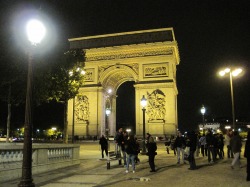It was pretty interesting to hear their questions and gain some insight into their assumptions about European travel. Many of them were curious about the food over here: “Do they eat Brussels Sprouts in Brussels?...What was the food like in Venice?...Do people go to waffle stands in Brussels like they go to Starbucks in the US?...Do they have lots of cheese?” And some of them were a bit more off the beaten path: “Was it crowded in Vienna?...What are their celebrities like?...What kind of landmarks do they have in Brussels?” It was difficult to articulate just how tough it can be to navigate through this new world, but I did the best that I could. Their reactions to my answers were pretty telling: they laughed when I explained that men are very nicely dressed and well-groomed, and they were pleasantly surprised to hear that Belgians appreciate “High School Musical” and the Black Eyes Peas. The first thing that comes to mind when they hear about Europe and Europeans are the intense differences.
I realize that we’re all fascinated by these differences. That’s what makes us want to travel and explore and learn. It’s magical and exciting to go somewhere unfamiliar, but this enthusiasm makes it nearly impossible to anticipate the challenges that come along with the adventure. But in the end, these difficulties merely add to the experience and make the beautiful discoveries that much more valuable. It’s frustrating when I can’t figure out the map of the Parisian metro system, but it is well worth the hassle when I emerge from the underground to see the stunning vision of the Arc du Triomphe lit up against the deep blue of the evening sky.

 RSS Feed
RSS Feed